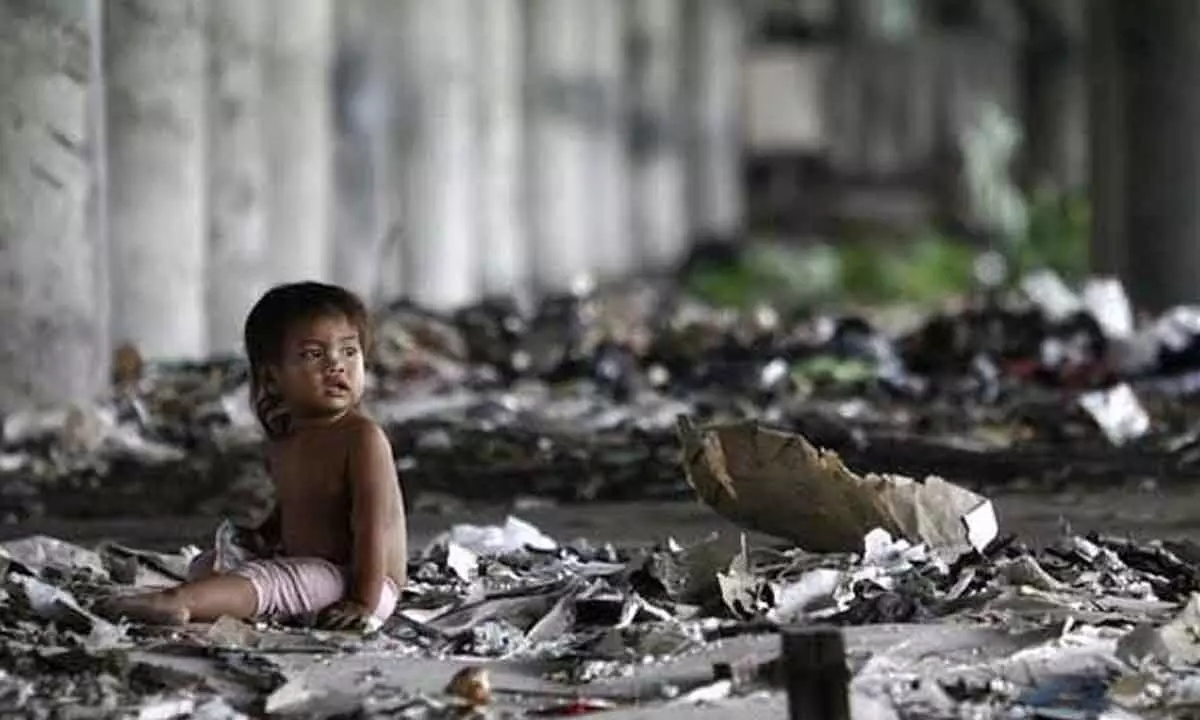Resolving the Indian poverty imbroglio remains a major challenge
image for illustrative purpose

Poverty is defined as the state of not having sufficient income or materialistic possessions like food, clothing and shelter. In the Indian context, poverty remains the gravest social and economic challenges, despite its growing economy. The planning commission uses the Tendulkar methodology to measure the poverty levels and this revolves around consumption or spending over a certain time period. Further, each State has its own poverty threshold to identify the BPL sections. Foremost among the myriad interconnected factors is the country’s rapid population growth, which puts enormous pressure on its resources. Second is the lack of access to quality education and healthcare, particularly in rural areas, has perpetuated a cycle of poverty. Following this is social inequality and discrimination based on caste, religion, and gender. Lastly, corruption and inefficient public distribution systems have hindered poverty alleviation efforts. The World Bank defined the international poverty line at $2.15 per day as per the 2017 purchasing power parity (PPP). This parity is a measure of the price of specific goods in different countries and is used to compare the absolute purchasing power of their currencies. Last October, India ranked 111 out of 125 countries in the Global Hunger Index (GHI) 2023, with its progress against hunger nearly halted since 2015, reflecting the prevalent global trend.
GHI measures countries' performance on four component indicators — undernourishment, child wasting, child stunting and child mortality. The Union government contested this ‘performance’ and blamed the ‘flawed’ methodology. India has a score of 28.7, indicating a serious level of hunger. But on paper, the country has much to celebrate given that around 248 million people escaped multidimensional poverty in the past nine years, according to a NITI Aayog report. The report suggests an 18% decline in multidimensional poverty over the last nine years, with the share of people living in this condition declining from 29% to 11%. The numbers would appear to show strong progress towards the goal of reducing multidimensional poverty to below 1%, but some economists have raised some serious doubts over the use of the Multidimensional Poverty Index (MPI), pointing out that the report does not paint the full picture. Nobel laureate Amartya Sen has highlighted the importance of addressing social inequalities and investing in education and healthcare to combat poverty and sustain economic development.
The 2023 MPI report finds that over a third of all poor people in the world live in South Asia—which is around 389 million people. India contributes significantly to this number, accounting for almost 70 per cent of the increase in extreme poverty. The World Bank defines poverty using the International Poverty Line, which designates extreme poverty at $2.15 per person per day, while $3.65 falls under the lower-middle income category and $6.85 is classified as upper-middle income. India's contribution constitutes 40 per cent of the slight upward adjustment in the global poverty rate, moving from 23.6 percent to 24.1 percent. Addressing poverty in India requires a holistic approach right from identifying the root causes. This includes promoting inclusive growth, gender equality, and sustainable development. Equally important is the need for transparent and efficient implementation of poverty alleviation programs. Only then can India truly leverage its demographic dividend and achieve its development goals.

